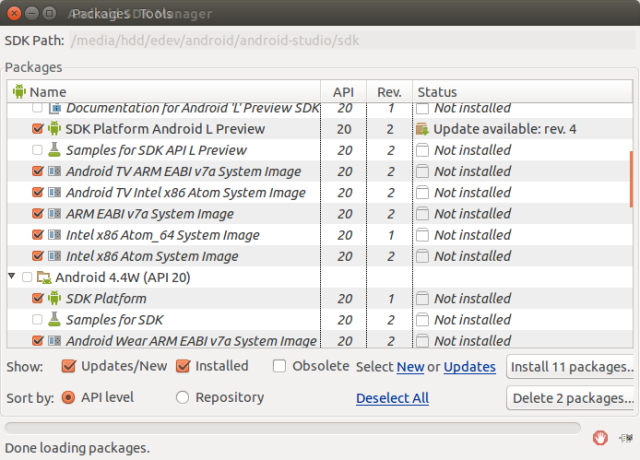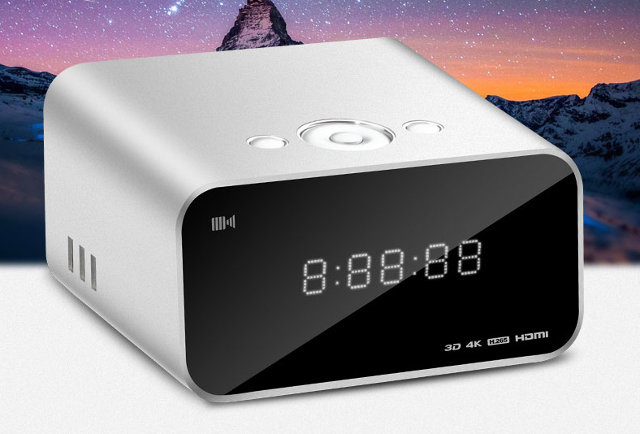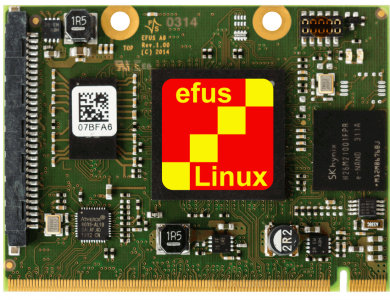Several weeks ago Linaro posted instructions to run Android L ARM 64-bit in QEMU which takes some efforts to setup, and at the time lacked OpenGL support (not sure about the status now). Google has now releases their own 64-bit Android L preview image for the x86 emulator, and hopefully they’ll release a 64-bit ARM image and NDK sometimes in the near future, as 64-bit mobile devices are expected for Q1 2015. That means developers can now test the 64-bit version of their apps build for x86 using Google emulator. Java only apps should most probably work without issues, but apps relying on native code (C/C++/assembler) will certainly require a little bit more work. The latest Android NDK (r10b) support 64-bit code, and apps can be built with x86_64 build target, or using APP_ABI=all64 in Application.mk. 64-bit support increases addressable memory space, provides a larger number of registers, and new instruction […]
The Egg is a Tizen Based Portable Touchscreen Cloud Server (Crowdfunding)
If you like the convenience of cloud storage, but are wary of privacy implications, and/or are not satisfied by the file download/upload transfer rate, a new device called The Egg might be what you are looking for. It’s a tiny Wi-Fi enabled cloud storage server, powered by an Intel Atom processor and running Tizen, with up to 256 GB storage that you can carry in your pocket, with your data being fully private and always accessible, and there’s also a touchscreen display to let you watch and share your media files. Egg technical specifications: SoC – Intel Atom Processor @ 2.0 GHz System Memory – 1GB RAM Storage – 64, 128, or 256GB eMMC Connectivity – Wi-Fi a/b/g/n (client / access point), Bluetooth 4.0 USB – Micro USB 2.0 type-AB for charging and file transfer from phone, camera, computer… Display – 2.4” Multi-Touch capacitive touch TFT, 240×320 resolution, 262K colors […]
Camera Not Working on Your Smartphone? No problem, Massage It!
I bought ThL W200 last year as my main (and only) phone, and my review was rather positive, because after testing the phone for a week or so I did not encounter some of the issues. After a short while I found GPS was not working very reliably, so I had to find instructions to fix GPS on Mediatek phones, then the first battery died after about 8 months, maybe that’s normal for my usage, but I was expecting it to last longer. Finally, after a while both front and rear cameras started to have issues such as green screen, color lines, or simply refusing to work with the message: “can’t connect to camera”. In all of this the good news (for me) was I was not alone, and I saw some instructions saying, you had to terminate the camera app, clear all data, and restart the phones. It seemed […]
Linux 3.17 Released
Linus Torvalds announced the release of Linux Kernel 3.17 on Sunday: So the past week was fairly calm, and so I have no qualms about releasing 3.17 on the normal schedule (as opposed to the optimistic “maybe I can release it one week early” schedule that was not to be). However, I now have travel coming up – something I hoped to avoid when I was hoping for releasing early. Which means that while 3.17 is out, I’m not going to be merging stuff very actively next week, and the week after that is LinuxCon EU… What that means is that depending on how you want to see it, the 3.18 merge window will either be three weeks, or alternatively just have a rather slow start. I don’t mind getting pull requests starting now (in fact, I have a couple already pending in my inbox), but I likely won’t start processing […]
Kaiboer Q8 Android Media Player Features USB 3.0, Gigabit Ethernet, and a 2.5″ SATA Bay
Kaiboer Q8 may look like an alarm clock radio, but it’s definitely an upcoming Android media player powered by Mstar 9810 SoC with 2GB RAM, 16GB eMMC, USB 3.0 ports, Gigabit Ethernet, and an internal 2.5″ SATA bay. The company had previously launched three MSO9810 Android STBs, two of which did not support hard drives, and one with a 3.5″ SATA bay, so this new product fills the void for 2.5″ hard drives. Kaiboer Q8 specifications: SoC – Mstar MSO9180D1R Quad core ARM Cortex A9 @ 1.5GHz with a quad-core ARM Mali-450MP GPU. System Memory – 2GB DDR3 Storage – 16 GB eMMC + microSD card slot + internal SATA bay for 2.5″ drives Video I/O – HDMI in, HDMI out (All models) Audio I/O – HDMI in/out, optical S/PDIF Video Codecs – Up to 4K. MPEG-1/2, MPEG-4, DivX, H.264, H.265 VC-1, H.263, Real Media, MVC, etc… Audio Formats – […]
Cortus Introduces APS23 and APS25 32-Bit Cores for Micro-controllers
ARM and MIPS are not the only games in town with it comes to 32-bit cores for micro-controllers. I’ve already written about Beyond Semiconductor, and mentioned Andes used in some Wi-Fi SoC, and today I’ve come across another IP company called Cortus. which just introduced APS23 and APS25 cores based on their latest Cortus V2 instruction set. which offers a smaller code footprint compared to there V1 ISA. APS23 can achieve 1.44 Coremarks/MHz, 2.83 DMIPS/MHz, and can run up to 200 MHz when manufactured with 90nm process, whereas APS25 is a bit more powerful with 2.09 Coremarks/MHz, 2.36 DMIPS/MHz, and can run up to 344 MHz. Minimal power consumption is 11.6 and 19.3 uW/Mhz for APS23 and APS25 respectively. Key features of both cores include: APS23 APS25 Excellent Code Density 3 stage pipeline 5-7 Stage Pipeline Sequential Multiplier High Performance Integer Multiply Optional Parallel Multiplier (Gives 2.62 Coremakes/MHz) Integer Divider Full Peripheral Set Dual […]
F&S Elektronik Systeme Introduces eFus A9 Industrial Computer Modules Powered by Freescale i.MX6 SoC
F&S Elektronik Systeme, a German embedded systems company, has announced their efus A9 Computers-on-Module (CoM) based on Freescale i.MX6, are now in mass production. The CPU comes in two variants A9V2 for i.MX6 Solo, and A9V3 with i.MX6 DualLite, both of which are certified for automotive and industrial applications, and support commercial, extended, and industrial temperature ranges. eFuse A9 computer-on-module specifications: SoC – CPU Freescale i.MX6 Solo (eFus A9V2) or DualLite (eFus A9V3) @ up to 1.2 GHz + Vivante 2D and 3D GPUs System Memory – 512MB (Up to 1GB RAM) Storage – 256 MB NAND flash (Up to 1GB), 2 GB eMMC (eFus A9V3 only. up to 32GB), optional SPI NOR, optional I2C EEPROM Display I/F – 18-bit RGB, 2x 24-bit LVDS, and DVI Other interfaces available via 230 pins MXM-2 edge connector: 2x SD card I/F 1x Gigabit Ethernet 1x USB Host, 1x USB Device 2x CAN […]
MatchStick’s Firefox OS Firmware Ported to MK808B mini PC
MatchStick is an HDMI Stick running Firefox OS and designed to stream online video, mirroring browsers, etc.. which makes it very similar to a Chromecast, even using the same DIAL protocol. The hardware is based on Rockchip RK3066, and Mozilla released an SDK for the device. Since there are quite a few Rockchip RK3066 TV sticks out there, BalintBanyasz announced he ported MatchStick’s firmware to MK808B (with RK903 Wi-Fi module), and has now provided the firmware and instructions on Freaktab. The firmware is based on Linux kernel 3.0.36+ used in Android 4.2.2. Once you’ve flash the firmware (matchstick-flingone-b2g2.0-201409281739-mk808b.img.7z) to MK808B, and installed MatchStick app / add-on in your Android device or Firefox Browser (iOS app coming) soon, you can “fling” a YouTube video from your phone / browser to your TV through MK808B as follows: Open MatchStick app on your phone in order to detect the hotspot (MatchStickXXXX) created by […]








